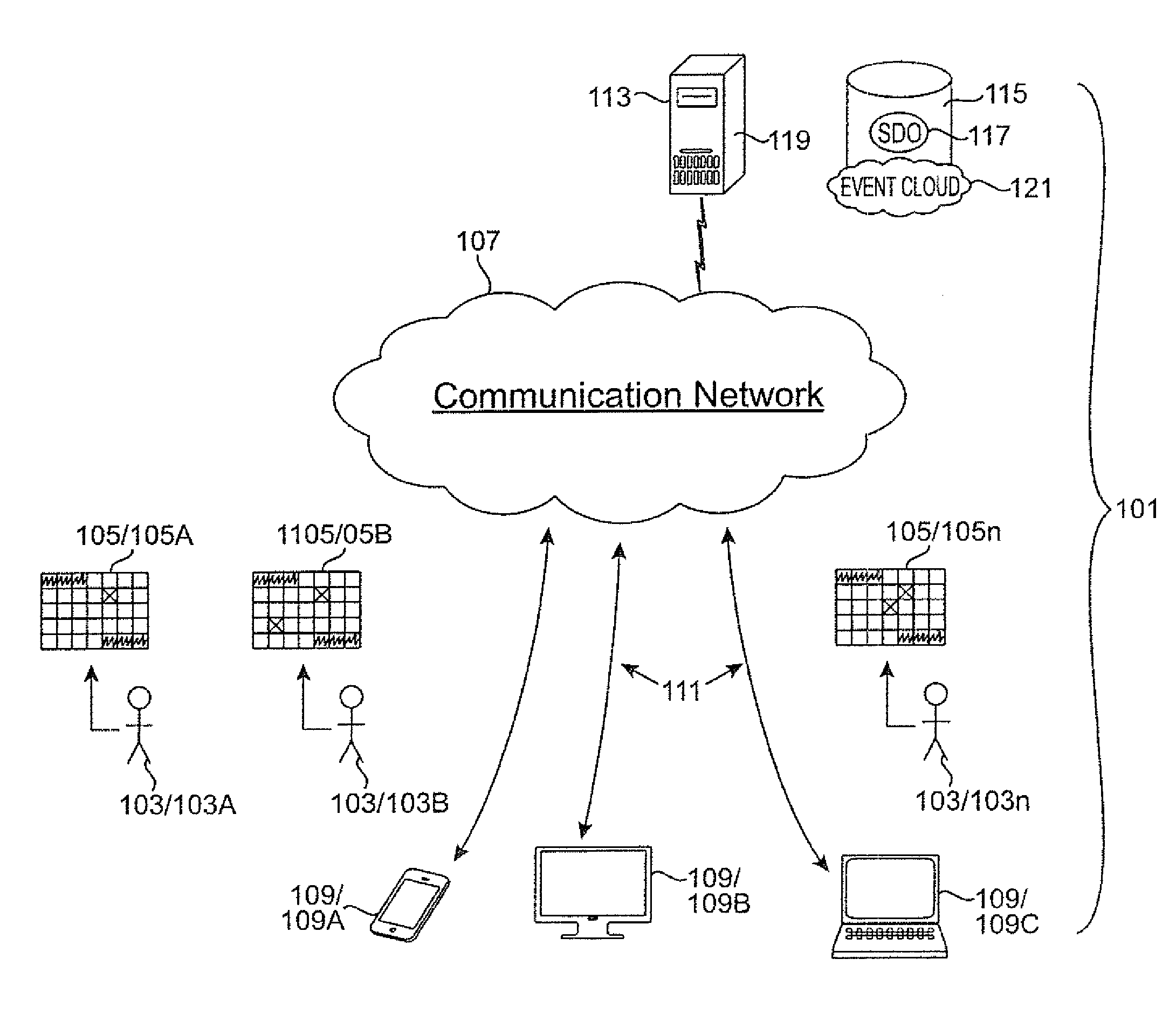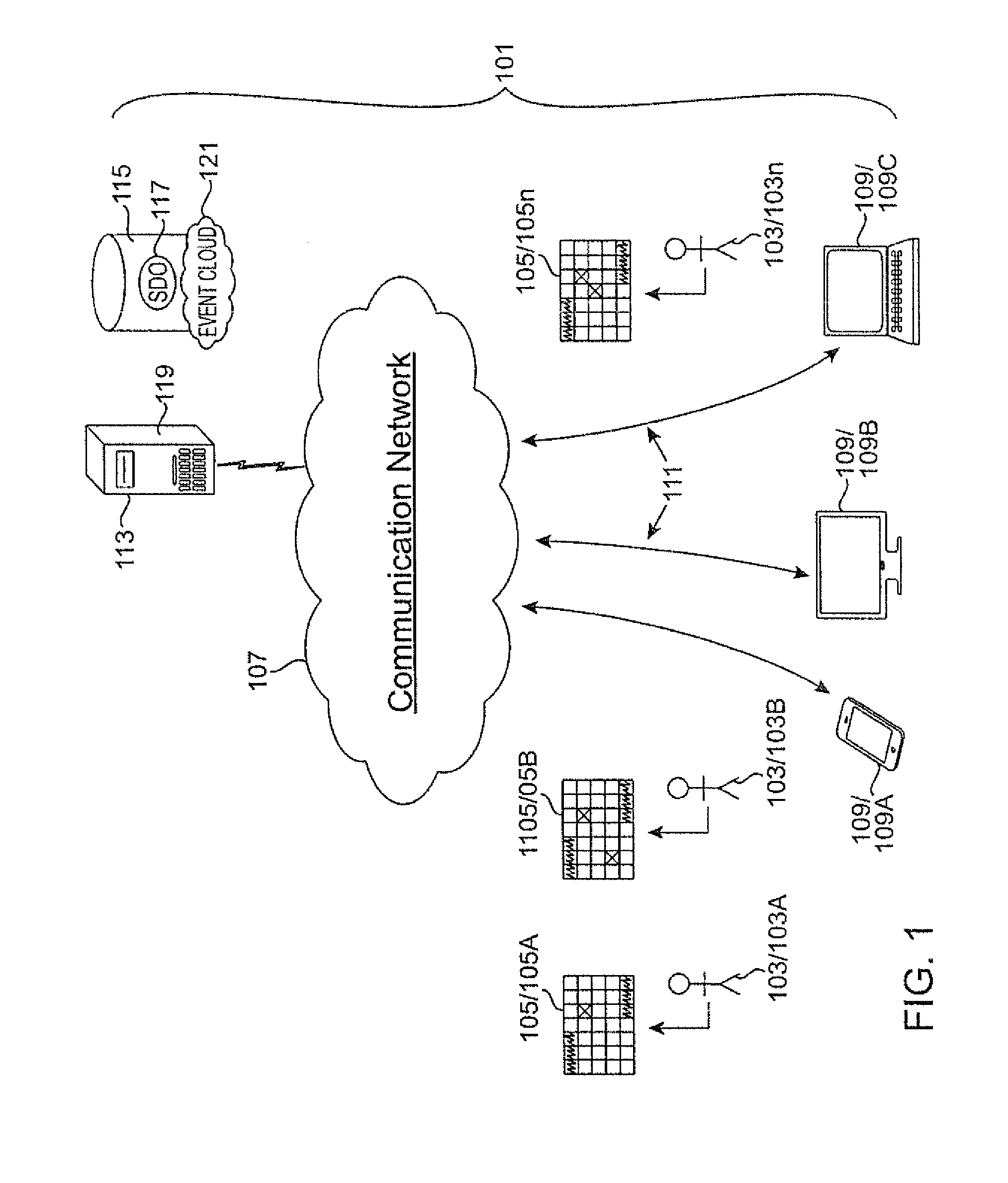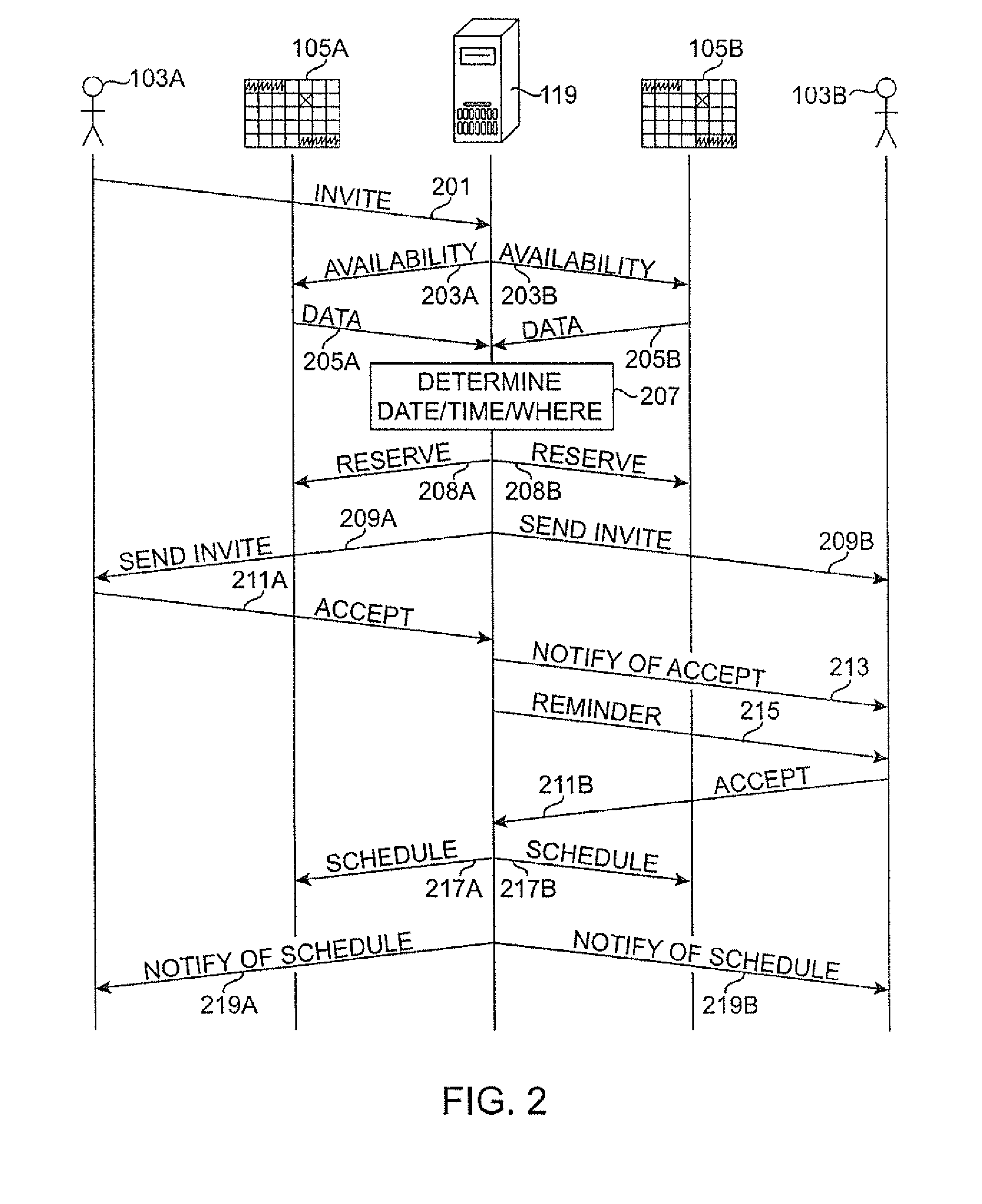This problem is not confined to business users, as families are increasingly busy, with parents and children alike having multiple events scheduled at multiple locations throughout the week.
The difficulty in scheduling events stems from a number of problems, such as discovering availability and preferences, matching these among a group of invitees, communicating the solution, and communicating it to those who need to know (which may include individuals beyond the invitee, such as venue managers, secretaries, assistants, family members, etc.).
Discovering availability and preferences is difficult because it requires the discovery and application of data that is not (and in most cases, should not be) shared among all invitees, and it also requires the discovery of information that does not exist in a calendar, and may not exist anywhere other than in the minds of the invitees.
The “where” portion of this formula is made even more difficult by the fact that travel times to and from locations can change dramatically from
day to day depending upon changing circumstances that cannot be definitively known in advance, such as traffic and weather.
Products such as Microsoft® Outlook® and Google® Calendar provide electronic interfaces into calendaring and appointment data and can provide features such as reminders and overlap warnings when a user attempts to double-book himself, but coordinating with others remains a problem.
For one, where users are not within the same enterprise, sharing calendar data is often difficult or impossible due to both technological and business limitations.
Different calendaring systems may be incompatible or fail to communicate to synchronize with each other, or the business or legal rules governing an enterprise may prohibit public sharing of calendaring data outside the company.
Moreover, technological solutions still involve the same basic problems as paper solutions.
This may result in a flurry of e-mails each containing a variety of suggested alternative dates, times, and places.
These
polling / voting approaches suffer a number of deficiencies.
Apart from being inefficient and timewasting, it is impractical (and sometimes impossible) to schedule in this fashion for a large group of people.
Thus, a possible meeting date, which is convenient for all but one invitee, is overlooked, forcing everybody else to schedule at a different time, which may be equally inconvenient for one or more other people.
For any non-trivial group of people, the computational effort required to solve this problem is far beyond the practical capacity of any one person, and with sufficiently large groups, is beyond human capability.
Another problem is that with large groups of people, there often is no clear leadership driving the process.
This also presents the problem of imbalanced scheduling.
In the previous example one user did not offer dates when he was available because it is inconvenient, but another offered all available dates whether convenient or not, in hopes of getting the meeting scheduled.
Over time, this can result in disproportionate inconvenience and hassle to the most cooperative participants, particularly for regular meetings, as users who tend to offer all dates in the interest of cooperation will continually be inconvenienced in favor of users who conflate
unavailability with inconvenient availability.
This results in a disparity in fairness, and biases meeting times and places in favor of one or two persons at the expense of others, simply because different users perceive and report availability on two different sets of criteria.
Another problem, particularly in arm's-length transactions involving professionals and businesses, is that the participants do not wish to share their calendar data at all, or share as little as possible, and thus do not want to disseminate lists of available and unavailable times. This is particularly acute where the parties to a meeting may be adverse in some fashion or lack equal bargaining position, such as attorneys or business contacts negotiating a deal, or parties with a disparity in social standing, influence, or wealth.
If a business discloses all availability, business rules cannot be applied to incoming appointment requests to optimize operations
for profit and
throughput.
This results in lost efficiency, which imposes a real business cost, as each block of time has equal weight / importance and any could be selected.
Yet another problem is that these types of negotiations require each user to independently determine travel times and take account of factors which may not be known in advance, or which may be difficult to calculate.
This adds an additional level of complexity, as, while it is easy for most users to quickly glance at a digital calendar display, such as Microsoft® Outlook®, to determine availability, it requires at least one additional step for the user to determine
travel time, assuming that doing so is possible at all.
Scheduling large numbers of people is orders of magnitude more difficult, such as where an event is planned with dozens, hundreds or even thousands of invitees.
At that scale, it is virtually impossible to coordinate and collaborate with all invitees, as it is very unlikely that there is any date when all potential invitees would be available—indeed, the
list of invitees may not even be fully known when the event is planned.
Instead, event planners generally consider the type and nature of the event and anticipated invitees and try to schedule around other events that would likely be of interest to those invitees and could produce a conflict.
For example, when scheduling an
evening performance for a middle school play, the school staff is likely to consider that the parents have other children in school in other grades, who may have conflicts.
Therefore, the staff tends to schedule away from Friday evenings in fall because the local high school almost certainly will have a football game most Fridays in the fall, presenting a conflict.
This is a coarse proxy for the individuals' preferences or availabilities and is prone to error, which can result in serious scheduling conflicts simply because the event planners overlooked competing events.
All it takes is for the event planners to miss one conflict, and they will have scheduled an event which is virtually impossible for its most interested invitees to attend.
Another pitfall with
event planning is that during the pendency of scheduling negotiations, while everybody is trying to determine a mutually agreeable date, additional invitations are typically coming to each individual participant.
Thus, users may wind up rescheduling events unnecessarily to avoid the appearance of being difficult or uncooperative.
However, this again simply shifts the problem rather than solving it.
With large chunks of time blocked out, when new meeting invites come up, the user may have
multiple days the user has previously reserved for still-pending meeting, and which are not available for the next meeting, forcing the second meeting to be scheduled around the user's proposed availability for the first one.
Further, data awareness is a problem with time blocking, as the user often has a hard time remembering which blocks are legitimate obligations and which blocks are placeholders.
This time
delay problem also applies to resources, as a
conference room or other meeting location or resource may need to be reserved or booked.
Thus, the
delay in putting down the deposit can cause a resource (e.g., venue or location) not to be initially reserved and then subsequently be booked, forcing the scheduling process to begin anew with a new location.
Further, if the venue is reserved, then, again, the resource is tied up unnecessarily, sometimes for days or weeks, while the organizers wait for all invitees to provide their acceptance of the invitation.
This can force other meetings or conferences or appointments to be scheduled around the blocked time for the reserved venue, which may not ultimately be used at all at the proposed time.
Much of the difficulty with scheduling stems from the fact that it cannot be done simultaneously and in real time, and requires the activate participation of all invitees.
This means that if one invitee is unavailable (e.g., on an
airplane flight, on a vacation in a
remote area, or otherwise indisposed), the entire process stalls until that person is available.
Also, if a particular invitee is simply dilatory in responding for any reason, such as that the invitee is adverse to the rest and doesn't wish to meet at all, the scheduling process fails.
 Login to View More
Login to View More  Login to View More
Login to View More 


